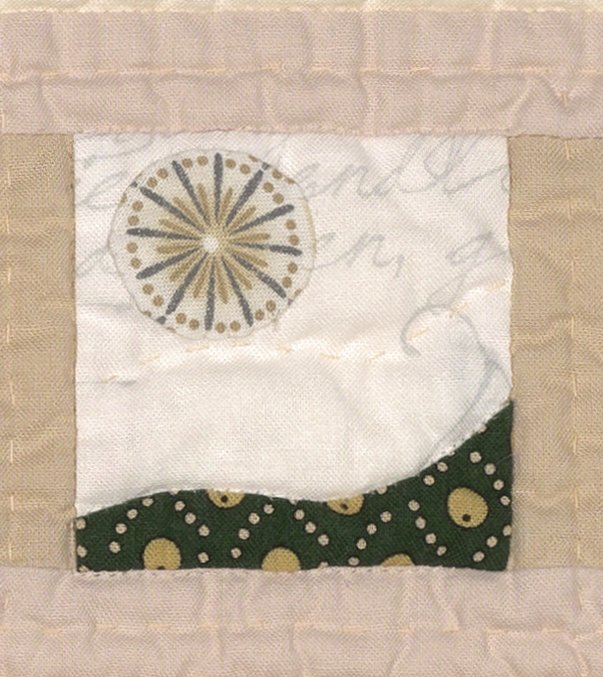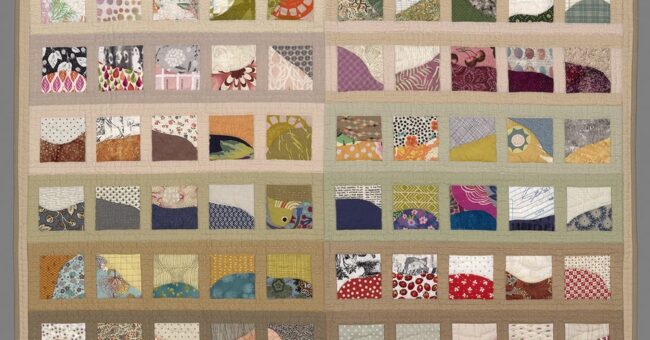
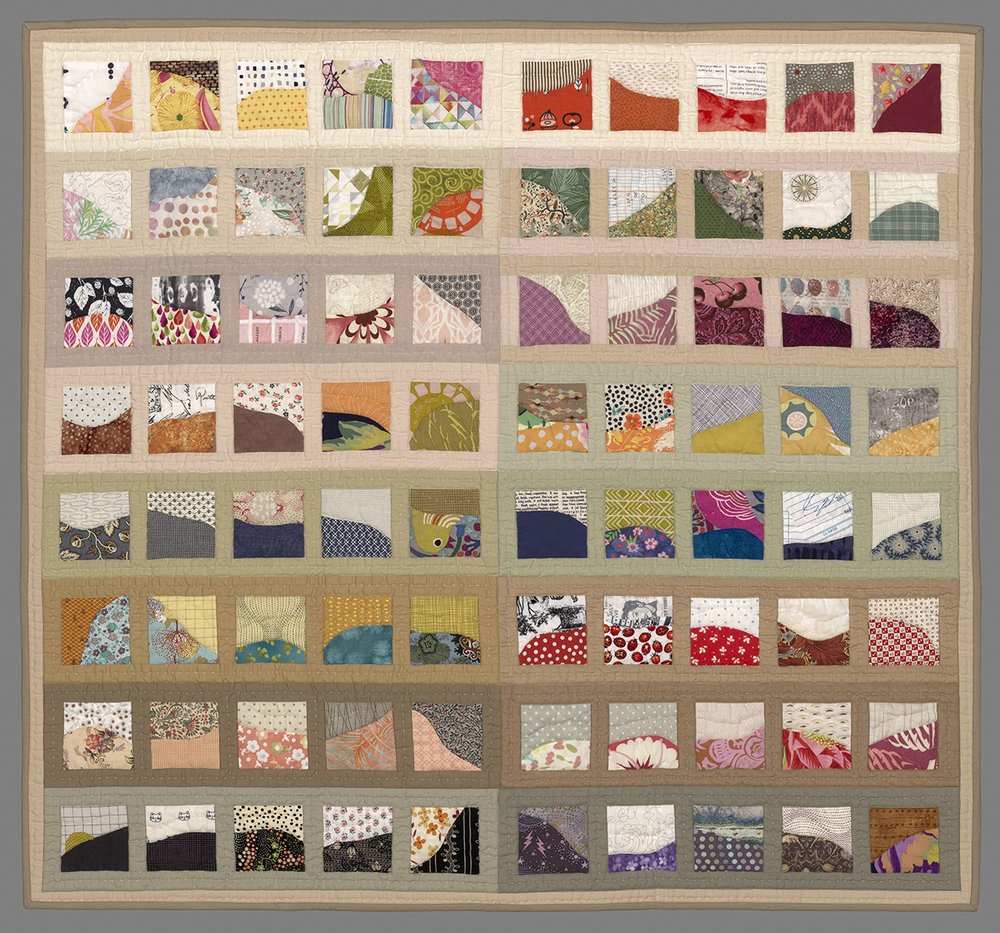
The Range 33”x30”
Since I just returned from QuiltCon, where The Range hung, it reminded me that I should tell a little story about this quilt. When I travel to teach, I often end up with a lot of downtime in hotel rooms, so I decided to use that time wisely and come up with a portable project. I had been thinking about reject blocks from one of my commission quilts and how I could use them as a jumping off point for a new quilt.
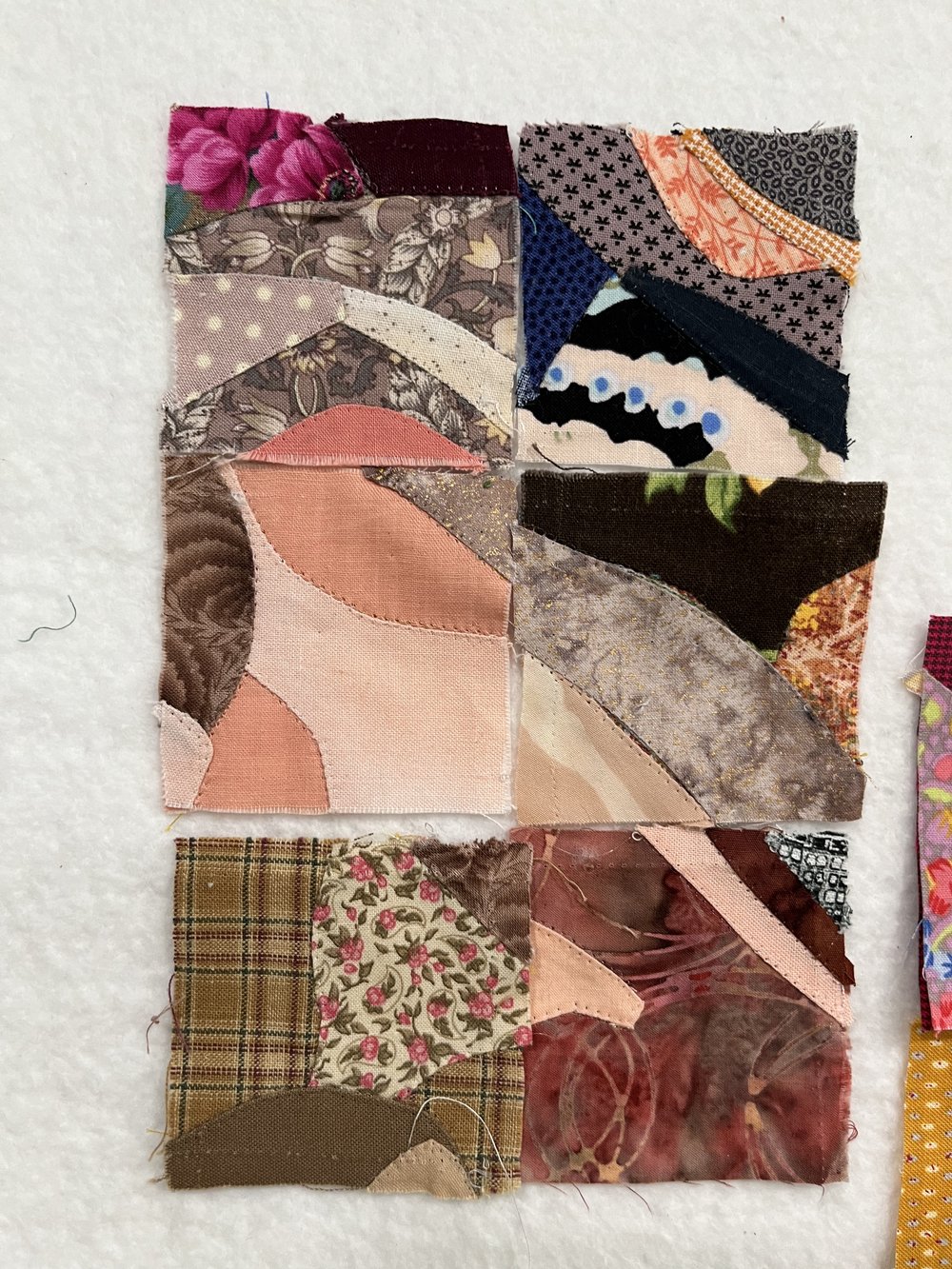
Reject (or inspiration) blocks. Each block is 2.5”, unfinished.
I thought the blocks above were interesting, but too complicated. To simplify the block I used two fabrics and made them into shapes that are reminiscent of the Holyoke Range, a small mountain range very near to my house. I used the same technique that I use in my book, Stitched Photo Mosaic Quilting, in that I made freezer paper templates and turned the edges under for the appliqué pieces. The pieces were then appliquéd down by hand.

Every quilt I make has a rule, which is usually a color rule. The rule for this quilt was to use one “neutral color” fabric and one “other” fabric in each block.
I envisioned setting the blocks together so that they would create shapes and paths between them. This didn’t work out to my liking. It was too much, and there wasn’t any continuity.
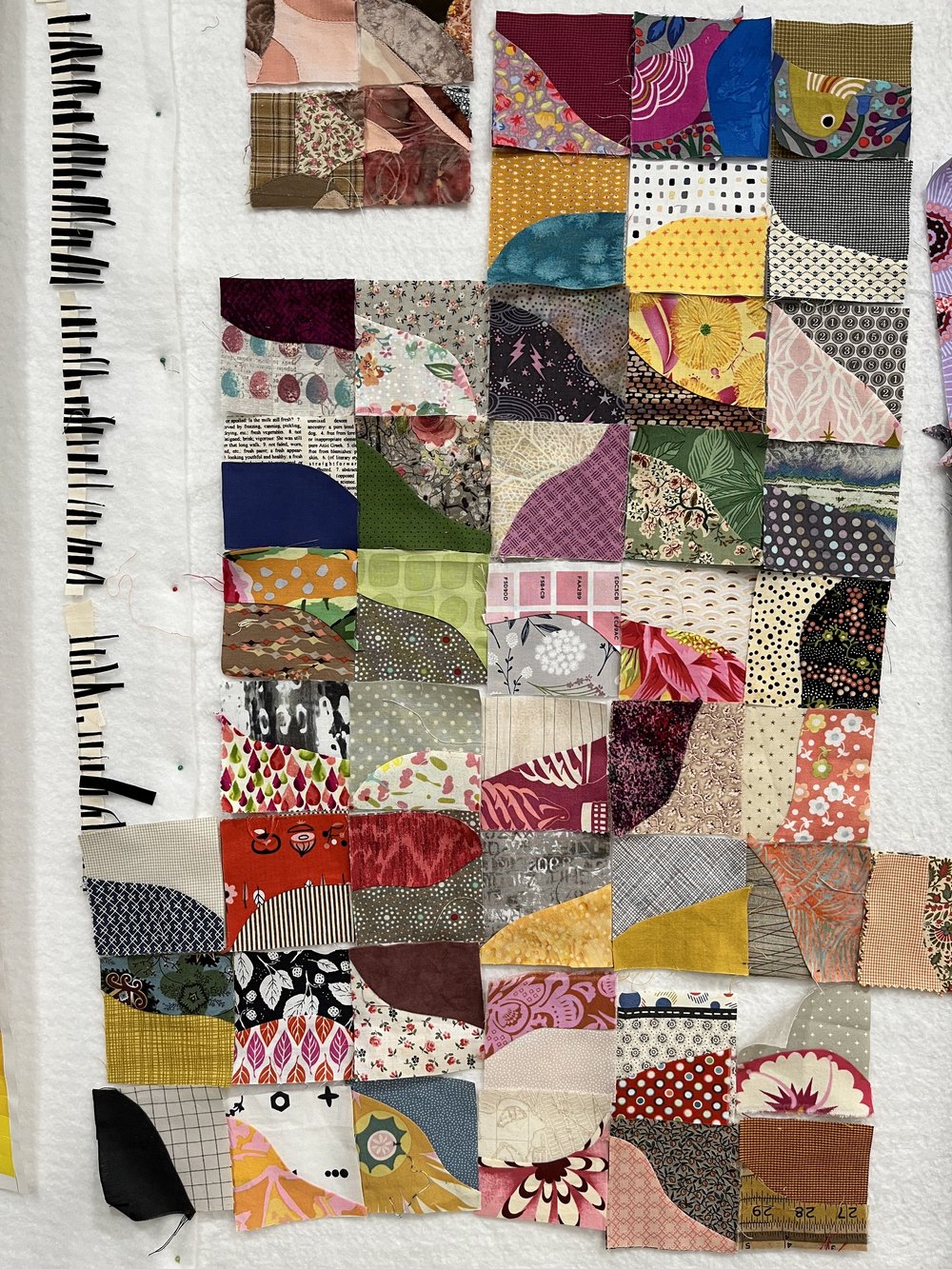
Organizing by color always calms things down, so I organized the blocks into color families and set them apart to give them a little breathing room.
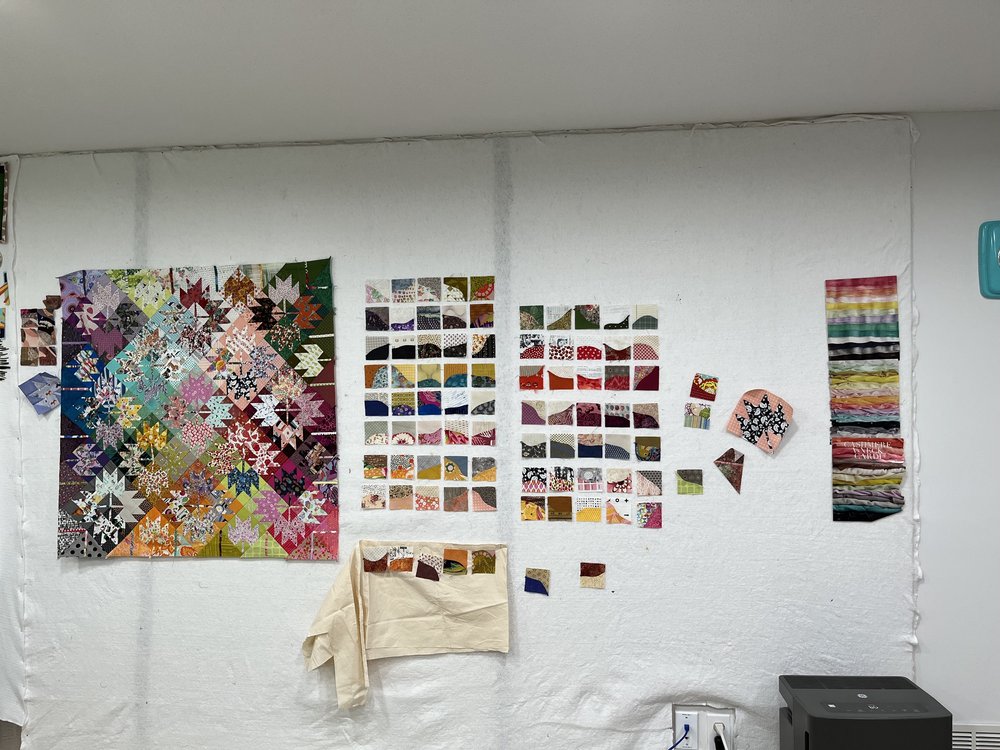
But now, what to set them with? I didn’t have enough fabric of any of the colors that I liked, so I used a different color for each “set” of little landscapes. Part of the reason I only buy small cuts of cloth is because I want to push myself to use what I have and not go buy more fabric. Having that restriction makes me come up with interesting solutions.

I stitched-in-the-ditch using my longarm, and then carried the quilt around with me while I added detail and texture with hand quilting. Once the quilting was finished, I decided to wet the quilt and block it to really make sure it was square. Well, many of the red fabrics (which were “vintage” and of suspect origin) bled. I really didn’t need to block it. This is a wall quilt, there is no need for me to have ever gotten it wet. I didn’t think it through completely.
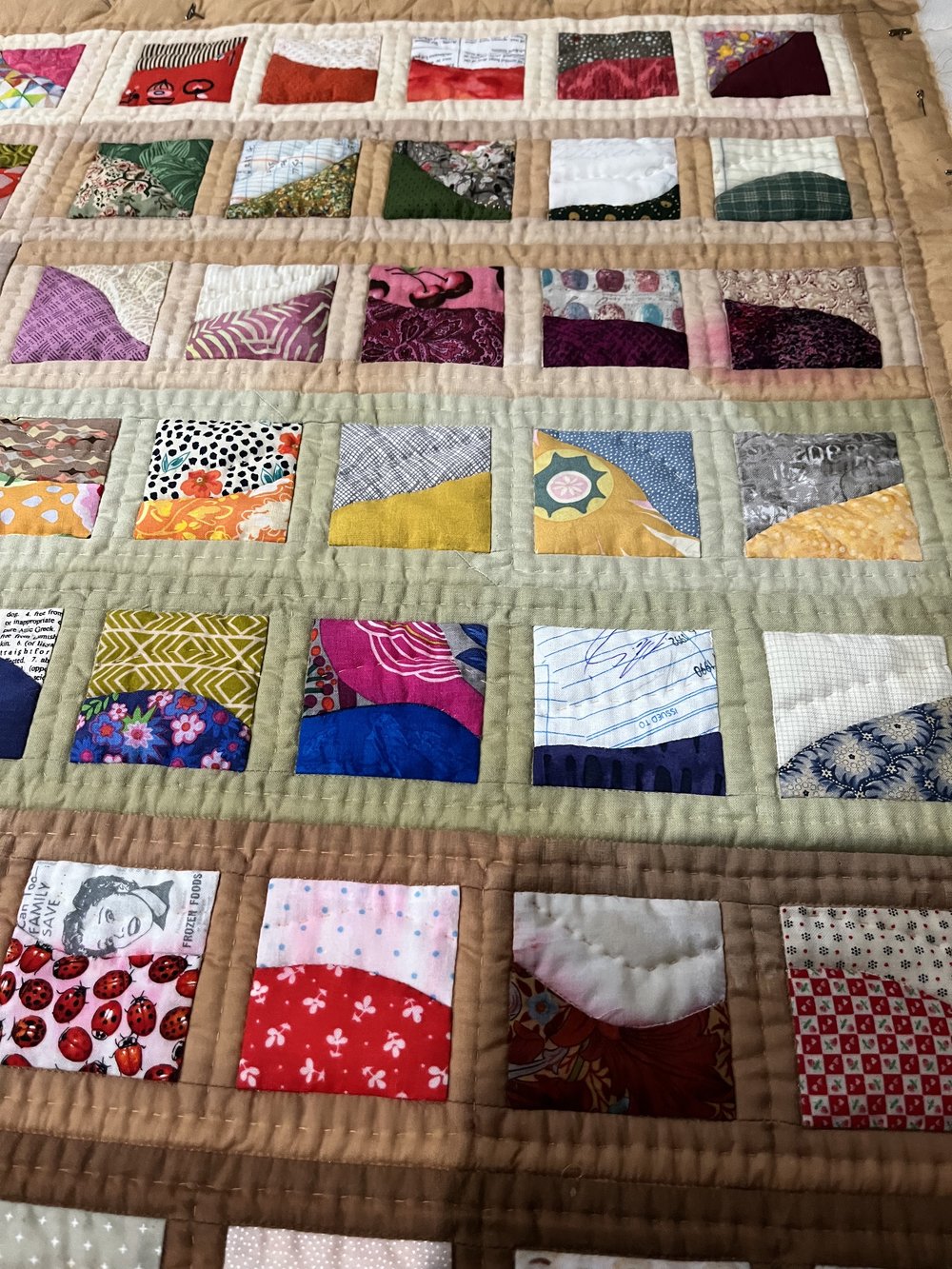
The best way I know how to stop bleeding in quilts is to soak them in HOT water with Shout Color Catchers. Since this quilt has a wool batting, I didn’t want to use hot water and take the chance that the wool would felt. At this point, I figured that I didn’t have much to lose, so I ran the quilt through the cold wash cycle in my washing machine, not once but twice, along with Synthrapol detergent and several Color Catchers. Most of the rogue red came out, but not all of it.
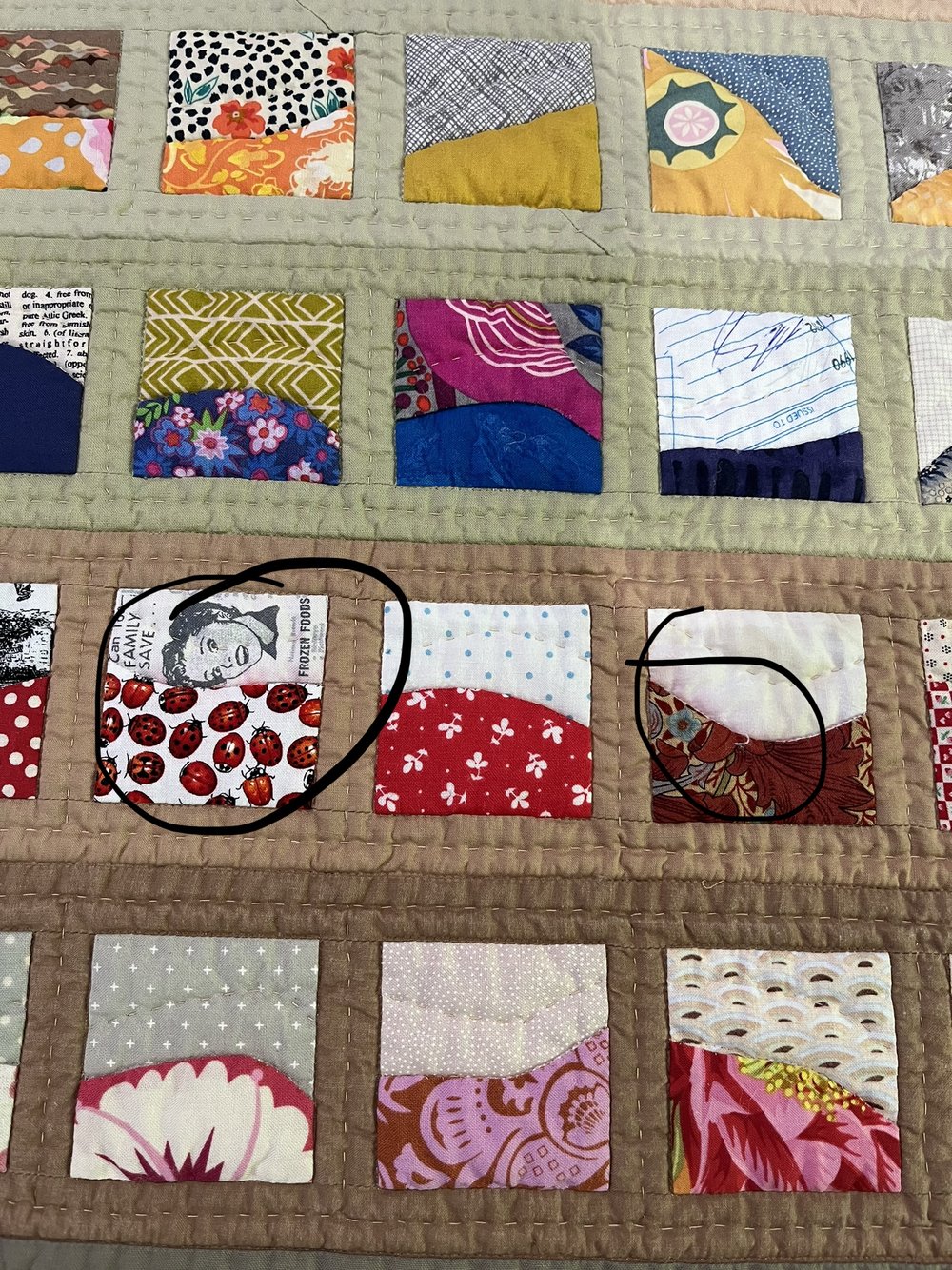

Blocking round 2, after the bleeding scare.
What I haven’t mentioned is that somewhere in this process I found that one of the fabrics had a hole in it. It’s looks like I had accidentally snipped through it with scissors. Apparently I was so annoyed, I didn’t take a photo of the hole. So now I had two problems to solve – how to cover the bleed, and how to cover the hole.
Appliqué to the rescue! First off I appliquéd two little strips to cover the bleeds. I had a tan that was close enough to the original fabric for the block below, on the right. I used a different black and white fabric for the block on the left. While I was bummed to cover up the face that I had fussy cut, it worked out fine since it allowed me to use a piece of fabric from my own Noble Menagerie line.

For the little snip, I appliquéd a little circle over the hole. I decided it was a moon.
I wanted the moon to seem intentional, I added a few more.
Often times the most interesting work comes out of having to solve a problem. While, I don’t know if these solutions make this quilt more interesting, it does make the quilt more personal. And now that I haven’t seen it for a few months, I like it again. Absence does make the heart grow fonder.


